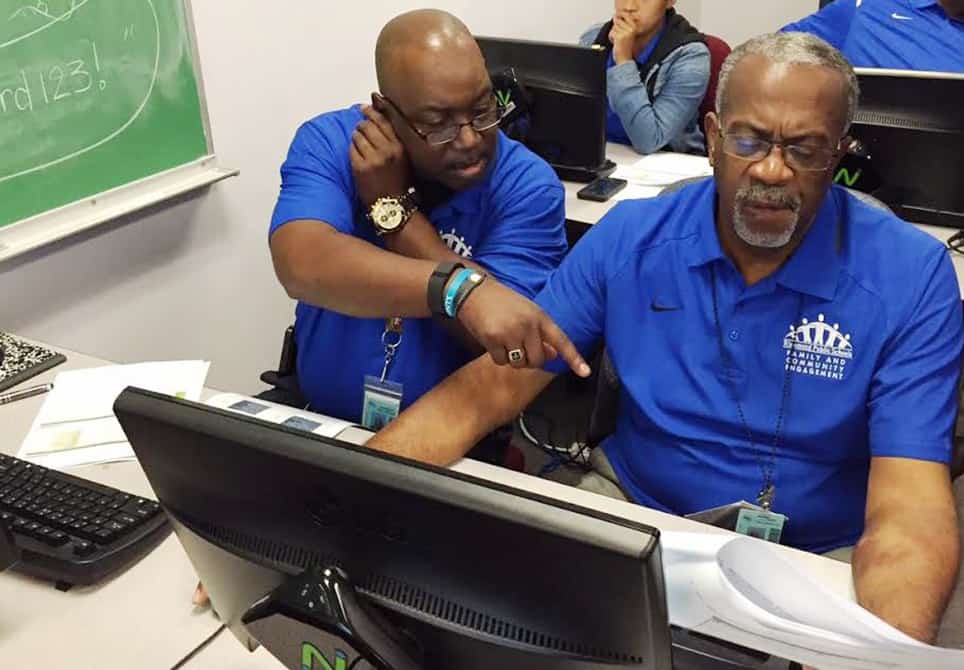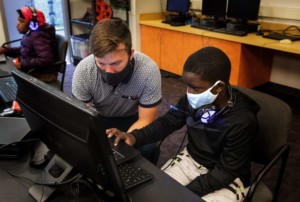Schools Need to Master the Art of Community Engagement

Dr. Dana T. Bedden
Innovation abounds in K-12 schools. From Chromebooks to the flipped classroom, there’s no shortage of big ideas designed to jumpstart academic success. If you’re heading to one (or more) of the many education technology events set to kick off across the country this year, the exhibit hall will no doubt offer up a crowded buffet of tools for teachers and students to plug into the connected classroom.
When it comes to teaching and learning, there’s always room for innovation—whether it’s a new app that helps educators collaborate, or robots that teach students to code. But our classrooms aren’t the only places where technology is fueling change in schools. Another, arguably as significant, transformation is taking place outside the classroom—in the daily conversations educators are having with parents, staff, and community members. Call it the evolution of community engagement.
Parents Expect Quick, Personal Responses
At the Richmond Public Schools (RPS) in Virginia, where I serve as superintendent, we hear a familiar refrain all the time: Parents and community members want a larger say in public education.
Schools have long done a tremendous job of getting their message out. We are good at broadcasting. Where our communication often falls short is on the other side of the conversation: listening and responding to community suggestions and concerns.
This shouldn’t be surprising, since customer care isn’t an area where we school leaders receive much formal training. As educators, our focus is directed inward, at our students, our pedagogy, and the tools we use for learning. The lion’s share of technology dollars are funneled toward classroom applications, which seems logical—albeit probably a little shortsighted.
RPS’ nearly 24,000 students and their families live in a world where exceptional customer service is desired as the norm. Companies like Amazon can deliver them a pair of running shoes in 48 hours, so they are conditioned to expect their child’s school to respond in a similarly timely fashion when they pose serious questions about the district’s new transportation plan, or how a recent change in school programs will impact their family.
The omnipresence of technology in our daily lives has created new expectations for school districts. Yes, parents want their students to be connected to the latest innovations for teaching and learning. But that is only half the battle. Parents also want their schools to be connected to their communities—and to be personally connected to them.
Failure to address these concerns can lead to real consequences, especially when families choose to enroll their students in alternative forms of education such as charter schools—taking with them precious state and federal dollars. Experience has taught us that an overwhelming number of parents who choose to enroll their kids in charter schools do so not because of the quality of education at their local public school, but as a result of a poor experience.
Creating a Connected Community
Districts around the country are taking a variety of approaches to community engagement. In Colorado, for example, District 51 and Archuleta #50 JT school district use the Community Collaboration for School Innovation toolkit developed by The Colorado Department of Education, The Colorado Education Initiative, and The Learning Accelerator.
At RPS, our efforts to create more connected communities take many forms. We engage parents and teachers in surveys designed to help us better understand their needs and desires. We’ve added features to our website and will be upgrading it to make resources and information more accessible.
Recently, we partnered with technology and communications provider K12 Insight to launch Let’s Talk! When the cloud-based solution is fully integrated with our website, every member of our school community will be able to log on to our homepage or use their own mobile device to submit feedback about our district.
In North Carolina, Guilford County engages and informs parents through workshops, videos, and free online tutoring to help kids with homework. The videos, from Connect with Kids, cover topics such as how to make sure parents aren’t overscheduling their children, how to talk to their children about risky behaviors, and how to recognize when a child is being bullied. All of these outreach efforts are coordinated by the Guilford Parent Academy, and they align with the goals of the Smart Parents project: ensuring that parents are involved, informed, intentional, and inspirational.
Like these other schools across the country, we desire to outfit our classrooms with the most effective resources, whether it’s mobile devices for students or new apps and tools for our teachers. They deserve our very best. But we simply can’t stop there.
The quality and reputation of our schools is affected as much by what we do in our communities as by what we do in our classrooms. A new communications solution might not command the same headlines as a new 1:1 Chromebook rollout, but that doesn’t make it any less valuable. Think about that as you browse the tools at your next EdTech event.
For more check out:
- Making the Shift from Community Engagement to Community Collaboration
- What Would Real Community Engagement Look Like?
- 5 Keys to Forging Strong Parent Engagement
Dr. Dana T. Bedden is superintendent of the Richmond Public Schools in Virginia. Follow Dr. Bedden on Twitter, @Dr_Bedden.
Stay in-the-know with all things EdTech and innovations in learning by signing up to receive the weekly Smart Update.






0 Comments
Leave a Comment
Your email address will not be published. All fields are required.